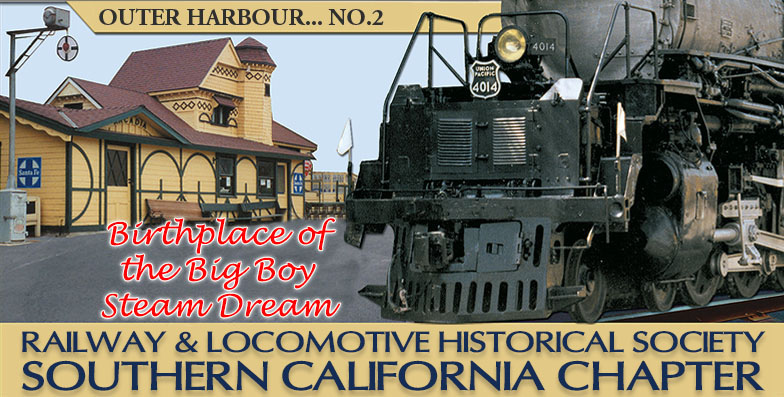Outer Harbor Terminal Railway No. 2
A Brief History Of This Engine
At the time of its retirement, Outer Harbor Terminal number 2 was reputed to be the oldest locomotive in daily service in the United States. Outer Harbor Dock and Wharf, Inc. Union Oil Company donated the locomotive to the Southern California Chapter in December, 1955. It is an 0-6-0 switching locomotive, and was used along the docks at San Pedro, California. It was originally built for Santa Fe Railway as their number “590”, then it was sent to the Southern California Railway as their number “40”. The Santa Fe assumed ownership of the Southern California Harbor Dock & Wharf and renumbered the engine “2”. The company later became the Outer Harbor Terminal Railway Company when the Union Oil Company took over operation of the OHD&W.

The Railroad In Los Angeles Harbor
In the late 1860’s Phineas Banning realized that for San Pedro Harbor to become a center of commerce, three things needed to be accomplished: Building a railroad, constructing a break water, and dredging the harbor to accommodate large ships and allowing them to dock directly at the wharfs. In October 1869, construction was completed on the Los Angeles and San Pedro Railroad, Southern California’s first railroad. On March 2, 1871, Congress voted an appropriation for construction of a rock jetty from the lower end of Rattlesnake Island (Terminal Island, today) to Dead Man’s Island.
In 1872, the Southern Pacific Railroad agreed to run their railroad through Los Angeles and purchased the Los Angeles and San Pedro Railroad. In 1875, a competitive railroad, the Los Angeles and Independence Railroad, was constructed from Santa Monica to Los Angeles. By 1877, however, the Southern Pacific, after drastically lowering rates, drove the new railroad into ruin, and purchased it for less than half of what it cost to build. In 1881, they built an extension of the Los Angeles and San Pedro railroad across the Wilmington Lagoon on pilings to a point near Timms Point, thus enabling direct railroad access to the deep water wharf. Phineas Banning died in 1882, but his dream of making San Pedro a major port of entry to the United States would soon be realized.
Soon, two new railroads entered the picture, competing with San Pedro as the dominant port for the Los Angeles area. The Santa Fe railroad constructed a wharf in Redondo Beach, which shipped a considerable amount of lumber from there. On April 13, 1892, the Dominguez heirs sold the Rattlesnake Island to a competing railroad, the Los Angeles and Terminal Island Railroad Company. Rattlesnake Island was known as such because it was home to a large population of rattlesnakes who migrated down the Los Angeles River. The named was changed to Terminal Island by the railroad company because of the terminus of the rail line established there.




